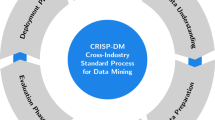Abstract
Comparison of biological (DNA or protein) sequences provides insight into molecular structure, function, and homology, and is increasingly important as the available databases become larger and more numerous. One method of increasing the speed of the calculations is to perform them in parallel. We present the results of initial investigations using the Intel iPSC/1 hypercube and the Connection Machine (CM-I) for these comparisons. Since these machines have very different architectures, the issues and performance trade-offs discussed have a wide applicability for the parallel processing of biological sequence comparisons.
Similar content being viewed by others
References
Academy Backs Genome Project,Science,239:725–726 (1988).
H. S. Hilofsky and C. Burks, The Genbank Genetic Sequence Databank,Nucleic Acids Research,16:1861–1863 (1988).
D. Sankoff and J. B. Kruskal (eds.),Time Warps, String Edits, and Macromolecules: the Theory and Practice of Sequence Comparisons, Reading, Massachusetts, Addison-Wesley (1983).
W. R. Pearson and D. J. Lipman, Improved Tools for Biological Sequence Comparison,PNAS,85:2444–2448 (1988).
D. J. Kuck, E. S. Davidson, D. H. Lawrie, and A. H. Sameh, Parallel Supercomputing Today and the Cedar Approach,Science,231:967–974 (1986).
Y. Saad and M. H. Schultz, Topological Properties of Hypercubes,Technical Report RR-389, Yale University Department of Computer Science (May 1985).
R. P. Gabriel, Massively Parallel Computers: The Connection Machine and NON-VON,Science,231:975–978 (1986).
S. B. Needleman and C. D. Wunsch, A General Method Applicable to the Search for Similarities in the Amino Acid Sequence of Two Proteins,Journal of Molecular Biology,48:443–453 (1970).
T. F. Smith and M. S. Waterman, Identification of Common Molecular Subsequences,Journal of Molecular Biology,147:195–196 (1981).
O. Gotoh, An Improved Algorithm for Matching Biological Sequences,Journal of Molecular Biology,162:705–708 (1982).
J. H. Saltz, Aggregration Methods for Solution of Sparse Triangular Systems on Multiprocessors,SIAM Journal of Scientific and Statistical Computation (to appear).
E. W. Edmiston and R. A. Wagner, Parallelization of the Dynamic Programming Algorithm for Comparison of Sequences,Proceedings of the 1987 ICPP, pp. 78–80 (1987).
J. V. Maizel, Supercomputing in Molecular Biology: Applications to Sequence Analysis,IEEE Engineering in Medicine and Biology, pp. 27–30 (1988).
E. Lander, J. P. Mesirov, and W. Taylor, Protein Sequence Comparison on a Data Parallel Computer,Proceedings of the 1988 ICPP,3:257–263 (1988).
Author information
Authors and Affiliations
Additional information
This research was supported in part by the Office of Naval Research under contact No. N00014-86-K-0310 and by NIH Grant T15 LM07056 from the National Library of Medicine.
Rights and permissions
About this article
Cite this article
Edmiston, E.W., Core, N.G., Saltz, J.H. et al. Parallel processing of biological sequence comparison algorithms. Int J Parallel Prog 17, 259–275 (1988). https://doi.org/10.1007/BF02427852
Received:
Revised:
Issue Date:
DOI: https://doi.org/10.1007/BF02427852




